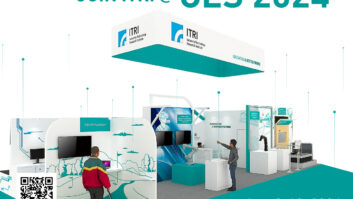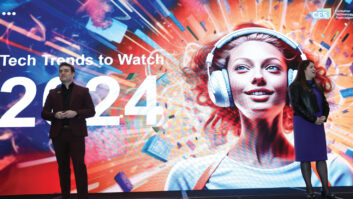Record crowds attended the 2005 International Consumer Electronics Show (CES), which reflected the acceptance of the digital technology across the board.
The initial attendance figure of 142,585, which is subject to an independent audit, is substantially higher than the then-record-breaking 132,000 which attended the 2004 show. CEA also reports that there were 2,550 exhibitors and exhibit space of 1.531 million net square feet, and international attendance was 23,028 (up from 18,000 last year) — all CES records.
Attendees braved the coldest, wettest Las Vegas weather in years, slogging through some rain and one snow squall on the Strip during CES, but it did not dampen their enthusiasm. And on the travel front there was a minimum of problems flying out of the city’s McCarran International Airport, unlike last year when there were massive delays of all types, according to the Las Vegas Review Journal.
The show floor was packed with executives from the consumer technology, broadcasting, cable, motion picture and numerous other industries.
The show featured a broad array of product and technology introductions and announcements, many of which provide consumers with control over when, where and how they use content. The show floor not only featured the latest developments in display technologies but a variety of products and innovations that build upon HDTV, such as wired and wireless connections to stream HD video throughout the home and new HD recording devices.
The latest in digital imaging, digital audio, satellite and HD radio, plasma and LCD displays, home video production, in-vehicle entertainment, VoIP and more were also on display.
In a prepared statement Gary Shapiro, president/CEO of the Consumer Electronics Association (CEA), the producer of the International CES, said, “The 2005 International CES succeeded by every measure. The consumer technology industry is in the midst of a rapid shift to digital.”
Shapiro added, “As a result, we are seeing numerous exciting product introductions. The International CES reflects this digital revolution.”
Karen Chupka, CEA’s events and conferences VP, said, “This year’s show seemed to feature more new product announcements and developments than any previous show, cementing the International CES as the global launching pad for new technologies.”
International CES also included its usual array of high-profile corporate keynoters, such as Microsoft’s Bill Gates, Intel’s Craig Barrett, Ron Garriques of Motorola, Carly Fiorina of HP and Texas Instruments’ Rich Templeton, plus a one-on-one discussion with Shapiro and Federal Communications Commission’s chairman Michael Powell. (For coverage of these keynoters, see this issue and the upcoming Jan. 24 edition of TWICE.)
The 2005 show also attracted more than 130 top officials from international, federal and state government bodies. The government leaders joined top executives from the technology, cable, broadcasting and motion picture industries at the show’s annual Leaders In Technology dinner, which featured a keynote from TiVo’s co-founder Mike Ramsay, who urged public policy-makers to avoid strangling innovation through overregulation.
In his keynote address, and during his remarks at the Leaders In Technology dinner, which was sponsored in part by TWICE, Shapiro stressed how the industry’s history of product innovation and change has enriched consumers worldwide, but cautioned that its ongoing ability to launch new products and features continues to face challenges.
“While we thrive on change, the concept of change threatens the status quo of other less agile industries,” Shapiro stated during his keynote. He pointed out that the movie and music industry had “fought to delay or handcuff every new digital technology, including television, the Internet and digital radio.”
Upcoming before the Supreme Court this year, he said, is a case challenging “peer-to-peer file sharing” over the Internet. Should the Court fail to uphold the Sony Betamax case principle “that our products are legal if they have legal uses,” the industry is going to “have to ask Congress to enact “legislation codifying this principle,” and so protect technology creators and their customers. “At the same time,” he added, the industry must fight “bad proposals which create new forms of liability and restrict information.”
On the TV front, Shapiro said broadcasters “must shift away from analog by a fixed date” and free up their analog channels “for the technologies and products of tomorrow.” In addition, he said, cable operators are trying to stop “implementation of FCC rules, designed to promote competition” by advancing the digital transition.
In yet another area, mobile electronics now represents some 30 percent of the value of new cars sold, Shapiro said, and the industry’s task is to ensure auto producers make their new models “hospitable to aftermarket products.”)
The industry thrives and relies on change. “It is absolutely necessary,” Shapiro said, and it is our industry’s job to oppose those seeking “to protect the status quo” by using “sheer political strength to distort the natural marketplace evolution and demand for out products.”
This CES, Shapiro said, is “not only the largest in our history,” but the largest “indoor show in our nation’s history.” As the show has grown, so has the CEA. Over the last four years, CEA has “tripled our membership to 1,850 companies” and, to enhance its ability “to become more effective on the lobbying front and also with tax, trade and environmental issues,” has severed its long-standing relationship with the Electronic Industries Association. — Additional reporting byBob Gerson













